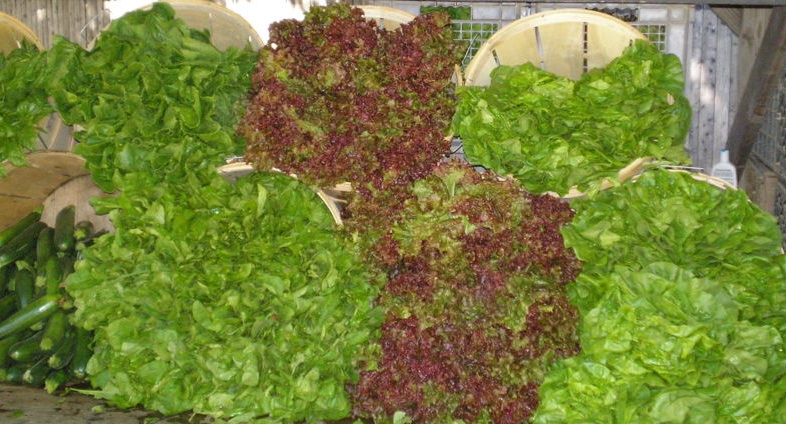
 July 7, 2009, Salinas, Calif. – Three new leaf lettuce breeding lines
July 7, 2009, Salinas, Calif. – Three new leaf lettuce breeding lines
with resistance to corky root have been released by the U.S. Department
of Agriculture’s Agricultural Research Service (ARS).
July 7, 2009, Salinas, Calif. – Three new leaf lettuce breeding lines with resistance to corky root have been released by the U.S. Department of Agriculture’s Agricultural Research Service (ARS).
 |
|
Corky root is caused by a bacterium called Sphingomonas suberifaciens. It lives in the soil and attacks the plant’s roots, causing them to enlarge and develop yellow to brown lesions and longitudinal cracks, taking on a cork-like appearance.
Once infected, the roots are unable to effectively absorb water and nutrients, resulting in smaller lettuce heads and yield loss. Cultural practices and fumigation techniques used to treat the disease are costly and labor-intensive. Therefore, developing lines with genetic resistance is still the most common and preferred method to combat the disease.
ARS geneticist Beiquan Mou developed three leaf lettuce breeding lines – one red leaf lettuce and two green leaf lettuces – with resistance to the disease. This follows his and colleagues’ previous work in developing corky-root-resistant iceberg lettuces. Mou crossed disease-resistant iceberg lettuce Glacier with popular leaf lettuce varieties. The offspring were tested at the ARS Crop Improvement and Protection Research Unit’s research farm in Salinas, Calif.
The new breeding lines are the latest to be released by the Salinas lab. Their plant weight is comparable to or higher than commercial cultivars. The breeding lines also showed little to no tipburn in test trials. Tipburn occurs when calcium is not adequately transported to the young, growing leaves. It causes brown or black spots that can coalesce and rot. This spoils the appearance and reduces the shelf life of lettuce.
The adaptation of these breeding lines to other lettuce-growing regions has not been evaluated. However, leaf lettuce has less environmental requirements than iceberg lettuce, allowing leaf lettuce to adapt to a wider geographical area. The new lines can be used commercially for production of fresh lettuce or to develop new cultivars.
Print this page